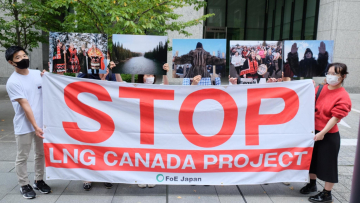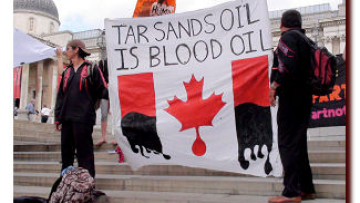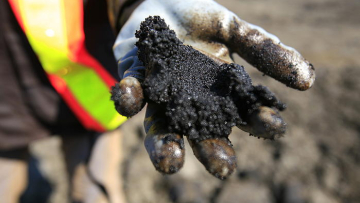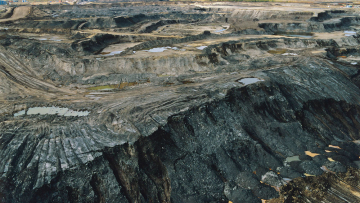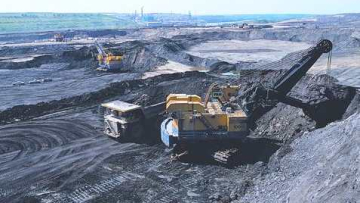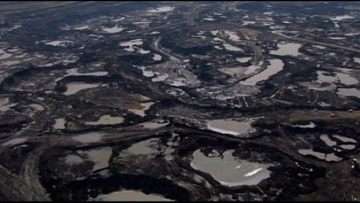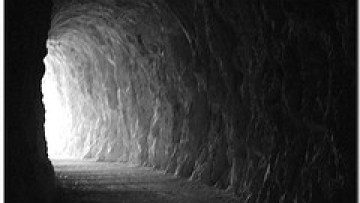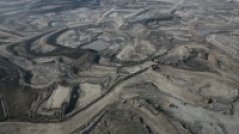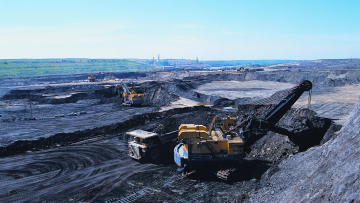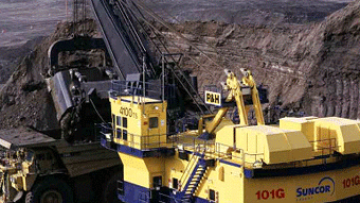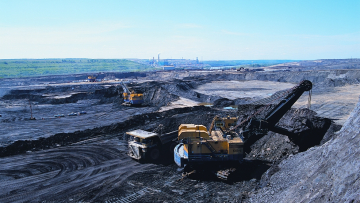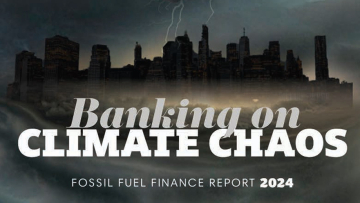
Project – On record
This profile is no longer actively maintained, with the information now possibly out of dateBankTrack
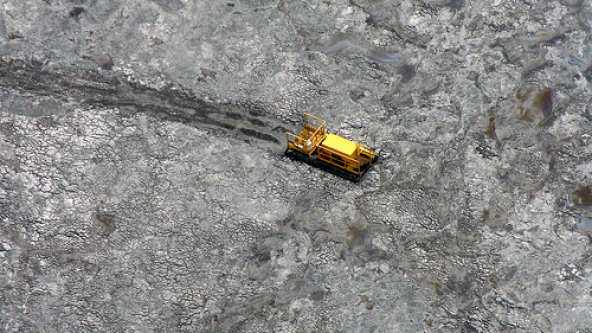
Project – On record
This profile is no longer actively maintained, with the information now possibly out of dateBankTrack
What must happen
- Require clients to provide evidence of Free Prior Informed Consent (FPIC) from First Nations on projects and activities affecting their communities. FPIC reflects international law, minimizes conflict, and was adopted by TD Bank Financial Group as part of its Environmental Management Framework in 2007.
- Phase out financing and advisory to projects related to oil sands, which adversely impact, in a non-reversible manner, critical natural habitats or freshwater resources used for drinking water. French bank Dexia adopted this global best practice as a part of its Energy Sector Guidelines for project finance, in 2008.
- Develop an action plan to reduce financed emissions of climate change pollution related to lending activities.
| Sectors | Oil and Gas Extraction |
| Location |
|
In the Canadian Boreal forest just downstream of the eastern foothills of the Rocky Mountains are the Canadian tar sands. The region contains some 2 trillion barrels of oil, but getting to it will mean destroying an area larger than the state of Florida.
Tar sands consist of heavy crude oil mixed with sand, clay and bitumen. Extraction entails burning natural gas to generate enough heat and steam to liquify the oil in order to extract it. As many as five barrels of water are needed to produce a single barrel of oil.
Tar sands oil is the worst type of oil for the climate. The production of a barrel of tar sands oil produces about three times as much CO2 compared to the production of conventional oil, because of the energy required to extract and process tar sands oil. Communities downstream from the tar sands mines report elevated levels of cancer that they blame on toxic contamination of the Athabasca River.
Social and human rights impacts
In Canada, the toxic burden on communities near the tar sands is already enormous. In addition to direct human exposure, oil contamination in the local watershed has led to arsenic in moose meat — a dietary staple for First Nations peoples — up to 33 times acceptable levels. Deformed fish have been found in nearby Lake Athabasca; drinking water has been contaminated; and a huge swath of the vibrant Boreal forest is being transformed into a toxic moonscape. One of the largest dams in the world is restraining a giant reservoir filled with toxic sludge from processing tar sands into oil.
Processing tar sands oil means more asthma and respiratory diseases, more cancer, and more cardiovascular problems. Contaminated wastewater, containing arsenic, mercury and various carcinogens, has already been linked to elevated rates of cancer in downstream First Nations communities.
Communities including the Athabasca Chipewyan, Mikisew Cree, Chipewyan Prairie Dene, Woodland Cree, Beaver Lake Cree, and Fort Mackay First Nations have all filed lawsuits over runaway tar sands developments. Failure to obtain free, prior and informed consent of these communities creates substantial material risks to continued development in the tar sands.
Environmental and climate impacts
Greenhouse gas emissions
It takes around 3 times as much energy to produce a barrel of oil from tar sands as it does for typical oil extraction (85.5kg CO2 per barrel compared to 28.6kg CO2). The expansion of oil sands is the fastest growing contributor to Canada's greenhouse gas emissions, yet the Canadian government is failing to regulate its carbon emissions effectively with absolute targets. Canada is set to miss its Kyoto targets.
Technological solutions such as carbon capture and storage are still years away, yet the companies are seeking licenses to increase carbon emissions at a time when the scientific community agrees the developed world needs to cut emissions.
Forests & Water
The oil sands reserves cover an area of 140,000km2 of the boreal forest - equivalent to 25% of Alberta (approximately the size of France). The extraction of oil sands requires huge impacts above the ground with survey lines, mines, processing plants, pipelines and drilling sites. Oil sands mining has left swathes of forest removed, fragmenting the habitat of the native caribou. Companies have promised to restore the habitat, but only 104 ha of land has been certified as reclaimed.
Tar sands require from 2 to 4.5 barrels of water to produce a barrel of oil. The Athabasca river cannot supply the quantities of water required for the proposed expansion, and the ecological viability of the river is already threatened.
The waste water is so toxic it has to be stored in tailings ponds that threaten leaks into the river. Concerns have been raised by the First Nations indigenous communities that live downstream about serious health problems they fear are linked to contaminated water and fish.
All data above are derived from Bloomberg in 2009. They have not been updated since then and therefore only provide a snapshot of the situation in 2009.
Athabasca Oil Sands Corp
CanadaBaytex Energy Trust
CanadaBlack Rock
- international -Bonavista Energy Trust
CanadaBP
United KingdomBronco Energy Ltd
United StatesCanadian Oil Sands Trust
CanadaCanWest Petroleum Corp
CanadaCenovus
CanadaChevron
United StatesChina Investment Corporation
ChinaCNRL
CanadaConnacher
CanadaConocoPhillips
United StatesDevon
United StatesEnCana
CanadaEnerplus Resources Fund
CanadaHarvest Energy Trust
CanadaHusky Energy
CanadaImperial Oil
CanadaInter Pipeline Fund
CanadaJACOS
CanadaKinder Morgan Energy Partners LP
United StatesKoch Resources LLC
United StatesKorea National Oil Corp
South KoreaMarathon Oil Corp
United StatesMEG Energy
CanadaMocal Energy Ltd
JapanMurphy Oil Corp
United StatesNexen
CanadaNippon Oil Corp
JapanOccidental Petroleum Corp
United StatesOilsands Quest Inc
CanadaOpti Canada
CanadaOrion Energy
United StatesParamount Resources Ltd
CanadaPembina Pipeline Income Fund
CanadaPengrowth Energy Trust
CanadaPenn West Energy Trust
CanadaPetro-Canada
CanadaPetrobank Energy & Resources Ltd
CanadaSinopec
ChinaStatoil Canada (second entry - use parent company profile)
CanadaSuncor
CanadaSyncrude
CanadaSynenco
CanadaTotal E&P Canada
CanadaUTS Energy Corp
CanadaTar Sands Action By “Gasland” Director Josh Fox
Oil On Lubicon Land: A Photo Essay
BP and RBS targetted by Tar Sands Tour
Video links
2010
2010-01-31 10:25:32 |
-
Analysts expect USD $200 billion to flow toward trebling tar sands production by 2020.
-
Increased greenhouse gas emissions associated with tar sands development is the main reason Canada will not meet its Kyoto reduction commitments.
- In 2010, Canada’s greenhouse gas emissions are projected be nearly 35 percent higher than 1990 levels.

